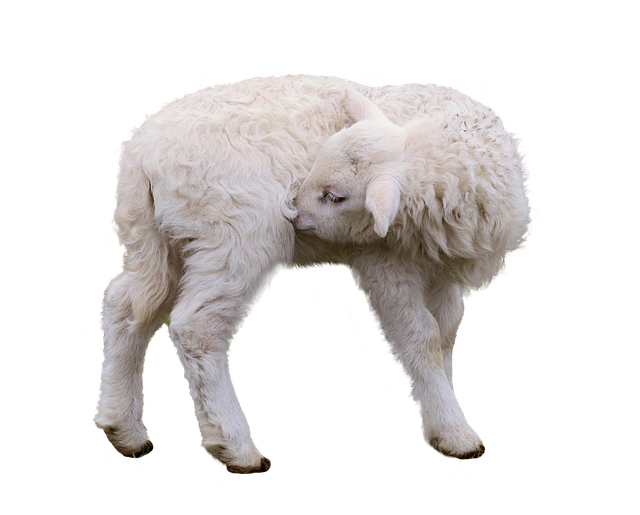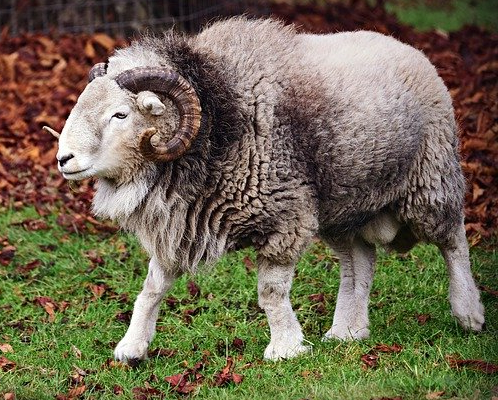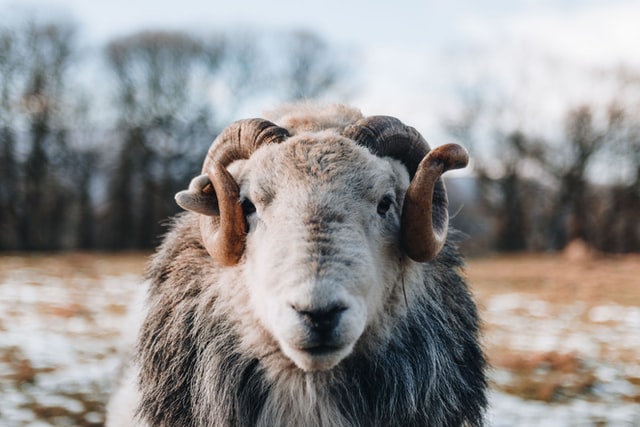Dapper sheep are a hardy variety of sheep that live solely on the lower slopes of
The Teeth. They have a reputation for being both territorial and aggressive, and, as such, they are not generally suited for domestication.
History
Dapper sheep is actually a corruption of the breed's original name. Initially, the breed was known as dappled sheep, a reference to their mottled grey and white
wool. Over several hundred years, a combination of misheard words and mispellings led to the two names being used interchangeably. In 4003
EA, a
Kaienese royal
scribe conducting an agricultural survey noted down a
farmer's flock as being 'dapper' sheep. Since then, this has been generally accepted as the breed's official name.
Though the breed is not often domesticated, they have been used in selective breeding programmes to create hardier versions of more docile sheep. There are currently two breeds in
Kaien and one in
Serukis that have dapper sheep in their lineage. The
Seruic mountain breed has retained some of the dappers' territorial nature, whilst the
Kaienese big-horn and the
grey-faced mountain sheep are much more meek.
Anatomy
The dapper sheep is a cloven-hooved,
quadropedal mammal. Its body is covered in a thick coat of grey and white wool. Shorter, finer white hair covers their face and legs, and they also have short, woolly tails.
The Ruminant System
Dapper sheep, like most breeds of sheep, are ruminants, which means that they have a multi-chambered digestive system.
The stomach is made up of four chambers: the rumen, reticulum, omasum, and abomasum. The grass they graze on is stored in the rumen, to be regurgitated later in a quieter moment. The regurgitated grass is then ground down properly by the molars before being re-swallowed. This is known as chewing the cud.
The four chambers of the stomach are used to gain as many nutrients of possible from the grass ruminant animals eat. This is especially important to the dapper sheep, as the grass that grows on the mountain slopes where they live tends to be scrubby and sparse for much of the year.
Males of the breed tend to be larger, and have large grey horns that curl into spirals. These horns begin to grow in adolescence, starting off as small nubs. It is possible to tell the age of a dapper ram by the size of his horns.
On the sides of their faces, Dapper sheep have two dark brown eyes with horizontal, slit-shaped pupils. These give them excellent peripheral vision, and they are able to see behind themselves without turning their heads. They also have good depth perception, which aids them in traversing the mountain slopes.
Above the eyes, they have two ears that stick out from the side of their head. Dapper sheep have good hearing that aids them in detecting predators early, before they would be seen.
On the front of their face, they have a rounded muzzle that contains both their nose and their mouth. Using their nose, rams can detect the pheremones of a female sheep - or ewe - that is ready to mate. Ewes also use their sense of smell to recognise their young after birth.

Behaviour
Social Groups
In the wild, a group of dapper sheep consists of one ram, up to ten ewes, and their offspring. Unlike other sheep, the dapper ram is territorial and will defend his ewes and lambs against outsider males and predators. If an outsider ram challenges the leader of a herd, they will fight, clashing their horns together and showing off their brute strength. The loser is exiled, whether this is the outsider or the herd leader. This happens often during the breeding season, though in most cases dominant rams are able to keep control of their herds by defeating interlopers.
Like most sheep, dapper sheep exhibit flocking behaviour. The herd will stay close together, keep an eye on each other whilst grazing, and will follow their leader wherever he goes. If danger threatens the herd, the ram will often stand his ground, though the rest of the herd will flee to safety. A cornered ewe, especially one with lambs, will not flee, and is likely to act aggressive towards the threat.
Breeding
Dapper sheep are seasonal breeders, meaning that the ewes are only fertile for a portion of the year to ensure the lambs are born at an appropriate time. The leader ram will mate with all the ewes in his herd in the late
autumn. After a gestational period of around five months, the ewes will give birth to one or two lambs in mid-
spring.
These lambs are fiercely protected by the herd. For the first few months of their life, they feed solely on their mother's milk, and then progress to eating grass and other foliage like the rest of the herd.
At around six months, the lambs are considered adolescent and are sexually mature. The males leave the herd to start their own, often accompanied by a couple of females. Some females stay with the herd to continue the cycle.
Domestication
Domestication of dapper sheep is hard due their aggressive and territorial nature, though not impossible. There are less than ten farmers across both Serukis and Kaien who keep herds of dapper sheep, and all of them are located in their natural habitat - the low slopes of The Teeth. These herds consist of one ram and a number of ewes; the exact number depends on the size of the farm and the financial status of the farmer.
Dapper sheep are kept primarily for their mottled wool, which is prized due to its varying shades of grey and white. Unlike many other breeds of sheep, dapper sheep have not been selectively bred, and therefore do not require regular shearing for their quality of life. Farmers shear dapper sheep in late spring, generally after lambing season, when they no longer need their woollen coats to protect them from the cold.
After the lambing season, male lambs are generally slaughtered for their meat. If a herd gets too large or unwieldy, older females will also be butchered for
meat.
Mutton is a staple protein in the foothills of The Teeth.
During the
summer, domesticated dapper sheep are herded up the mountain slopes from the farmers' fields. They spend the warmer months grazing on the foliage the mountain has to offer, before being brought back down to the fields in the late autumn. Over the
winter, they are fed on
hay that the farmer has stockpiled.
When the herds are on the mountain slopes, they are accompanied by two
shepherds, who stay alongside them for the duration. These are often the farmers' sons or hired hands. The shepherds stay in weather-proof tents, and are armed with a wooden
club and a
hand axe.
Their job is to protect the herd from predators and wild rams. Wild rams are actually more dangerous to a domesticated herd, as the wild ram is likely to win against the farmer's own and then make off with the ewes. This costs both time and money.
Domesticated dapper sheep are marked with a metal tag in their left ear. This is particularly useful if one gets lost or wanders, as the tag is used to prove ownership and to separate domesticated sheep from wild ones.



















I really am obsessed with the way you describe animals, its a skill I truly envy. I really admire the way you nail the anatomical details while still making it interesting to read. Also mandatory SHEEEEEEP!!! I love them, and I loved the story of Ramsay, I'm glad they built a statue of him.
Aw thank you! I love sheep too! <3